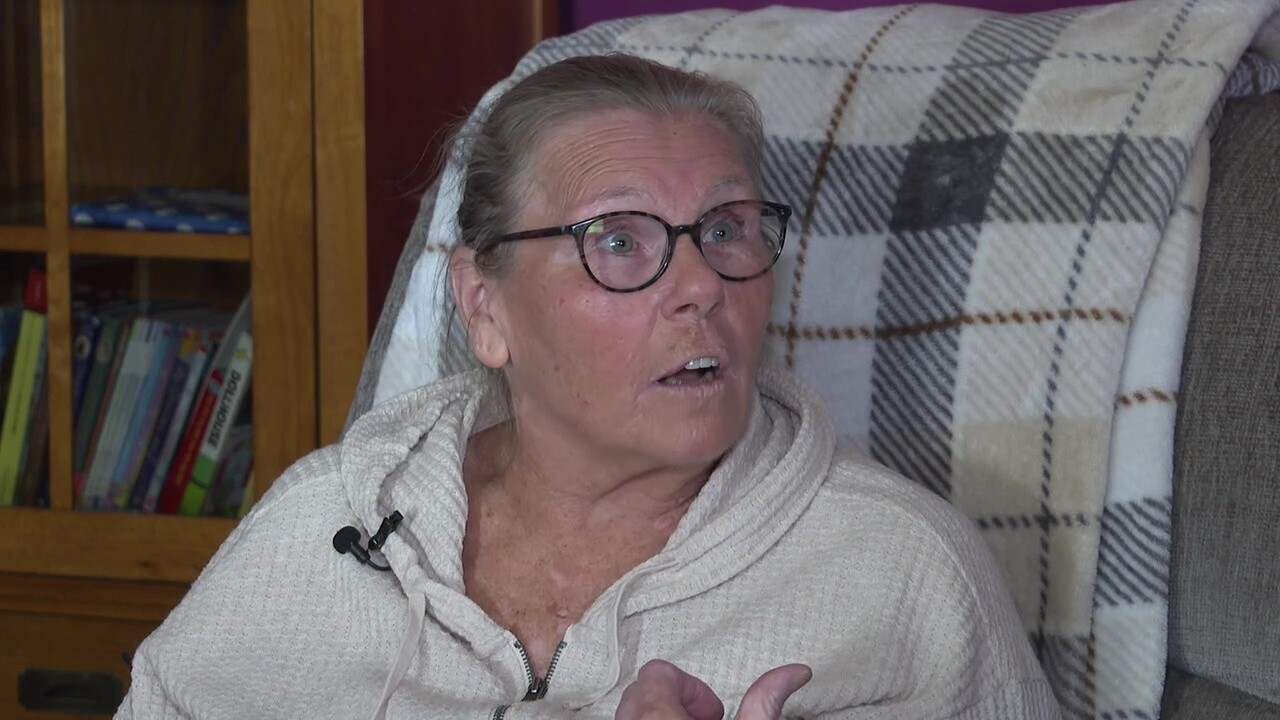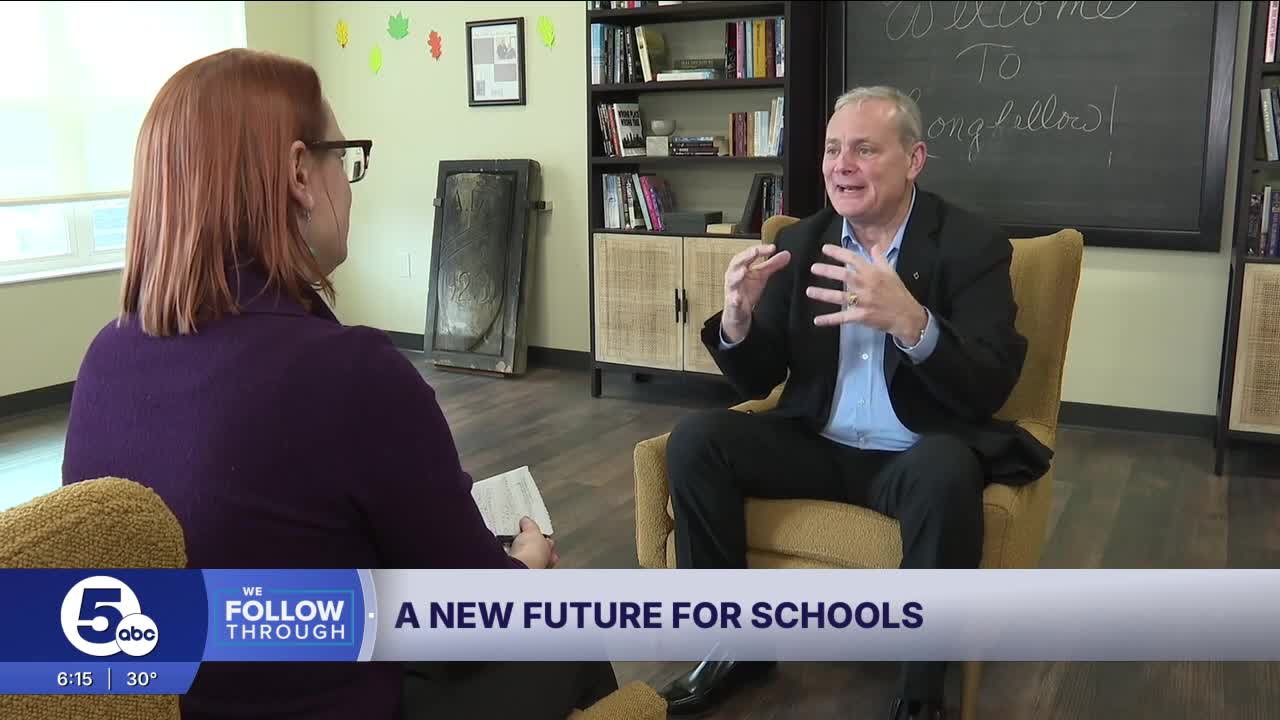CLEVELAND — The Cleveland Metropolitan School District’s consolidation and cost-cutting plan, announced last week, calls for shutting 18 of its buildings – and dropping a handful of leases.
As families, teachers and administrators prepare for major changes to the district’s footprint, neighbors are wondering what’s next for the buildings that get left behind.
Across the city, developers and nonprofits have turned former schools into apartments and, in one case, a manufacturing training center. But other properties owned by CMSD are still sitting vacant, despite years of attempts to find new uses – and the money for renovations.
On Thursday, Cleveland Mayor Justin Bibb said the consolidation presents “a unique opportunity” to reimagine surplus real estate. Standing with CMSD CEO Warren Morgan, flanked by pastors who endorsed the downsizing plan, Bibb said there’s more news to come.
RELATED: Pastors stand with Mayor Bibb, CMSD CEO to support district's restructuring plan
“Over the next couple of weeks,” he said, “you’ll see a plan be announced from my administration, in partnership with CMSD, outlining our vision for those old school sites to make sure they’re integrated into a broader community development strategy.”
If the Cleveland Board of Education signs off next month, the district will empty out 18 CMSD-owned properties scattered across the city. Those buildings are a mix of old and new, big and small, elementary schools and high schools.
Under state law, the district must give charter school operators the first opportunity to buy the buildings at fair market value, based on a recent appraisal. Developers will get a chance if the charter schools don’t bite.
Several of the buildings are historically significant – and eligible for federal and state historic tax credits for renovations. Collinwood High School on the East Side, Mary Church Terrell on the West Side, and Tremont Montessori are protected city landmarks.
'Really hard projects'
But preservation incentives aren’t necessarily enough to get the job done.
“These are really hard projects,” said Arne Goldman, an architect and the director of business development at Marous Brothers Construction, which is based in Willoughby.

Marous worked with Vesta Corporation, an out-of-state developer, on the residential makeover of the historic Henry W. Longfellow School in Collinwood.
The property was large enough to allow for new construction next door, an addition linked to the original building by a long corridor lined with mailboxes and package lockers.
RELATED: 100-year-old former Cleveland school now affordable senior housing
Between them, the buildings hold 80 apartments reserved for low-income tenants ages 62 and up.
The former auditorium, with the stage and vintage speakers intact, is a gathering place for birthdays and other events. The old gym is a fitness center with a walking track.
'Heartbreaking when we walked in'
The historic building, which reopened in 2023, looks dramatically different from the way it did when Goldman and other preservationists first toured it in 2016.
At that point, it had been sitting empty for years. It was covered with ivy and damaged by vandals, who tore asbestos-laden insulation off the pipes and polluted the air.
“There was so much wet plaster … sitting on the floor, it was actually heartbreaking when we walked in,” he said. “I actually had to wear a respirator for the first, and hopefully last, time in my career.”

CMSD planned to demolish the building. But the district agreed to give the school a reprieve, allowing the Cleveland Restoration Society a chance to find a developer.
But it still took years, and a complicated web of financing, to make the deal happen. CMSD chipped in some money that was originally intended for demolition.
The project also qualified for federal and state historic preservation tax credits and low-income housing tax credits. That wouldn’t be possible now.
In late 2022, the General Assembly prohibited developers from using federal low-income housing tax credits and state historic preservation tax credits on the same deal. That move swiftly killed several projects in Cleveland, including school redevelopments.
Without the ability to layer those credits, “projects like these are much, much more difficult to make pencil,” said Goldman, while sitting in the lobby at Longfellow.
'It's a waste'
In 2021, CMSD teamed up with the city to solicit redevelopment proposals for 12 old school buildings and a few former school sites. Though developers pursued many of those properties, most of the buildings are still sitting vacant.

The most visible of them, perhaps, is the former Willson school on East 55th Street, which has been empty for years. Another city landmark, it’s dilapidated and covered with graffiti, despite a chain-link fence designed to keep vandals out.
“Let’s face it,” Goldman said. “When a school’s closed, it can be forgotten.”
That’s what Nancy D’Amore doesn’t want to see in the West Boulevard area, where her great-granddaughter, Aura, is a fifth grader at Mary Church Terrell.
D’Amore and Aura regularly walk the half mile between their house and the school, passing familiar neighbors along the way. Mary Church Terrell is the social nexus of the community, she said, a melting pot of beloved teachers and kids from pre-kindergarten through eighth grade.
“I just know a lot of these kids would not do as well someplace else,” said D’Amore, who was devastated to learn that Mary Church Terrell is set to merge into Wilbur Wright, an elementary school another half mile from her house.

The school district is trying to avoid a projected $150 million budget deficit through cutting real estate and administration, including principals and vice principals. CMSD officials say larger, consolidated schools will be able to offer more courses and activities, ensuring more uniform access across the district.
But D’Amore can’t see anything filling the void if Mary Church Terrell closes.
“It’s a waste,” she said. “I mean, what are you gonna do with an empty building?”
'An element of patience'
Marous Brothers Construction is working with developers on some of the schools from the district’s 2021 disposition effort.
Goldman said progress has been slow because of funding gaps and the size and layout of some of the properties.
Developers are still grappling with the fallout from the pandemic, politics, tariffs, higher interest rates, construction-pricing swings and labor challenges. In Cleveland, construction costs are comparable to what they are in larger cities – but rents are lower.
And schools are particularly challenging. They have wide corridors and other shared spaces that developers can’t rent out, making them less efficient than new construction.
Extra land, like former athletic fields, can be critical to making a project work. At Longfellow, Vesta and Marous had roughly 5 acres to work with.
Goldman suggested that CMSD should find ways to give buildings to developers or sell them at very low prices. And if the district has money set aside for demolition, it should go toward preservation and redevelopment of former schools instead, he said.
“CMSD’s gotta choose the right development partners that are experienced,” he said. “The second thing is, they’ve got to understand that there’s an element of patience.”
And not every building is a good candidate for a new use.
“I don’t envy CMSD as they move forward with closing the schools and trying to repurpose them,” Goldman said. “Because, look, if it was easy, everybody would do it.”




